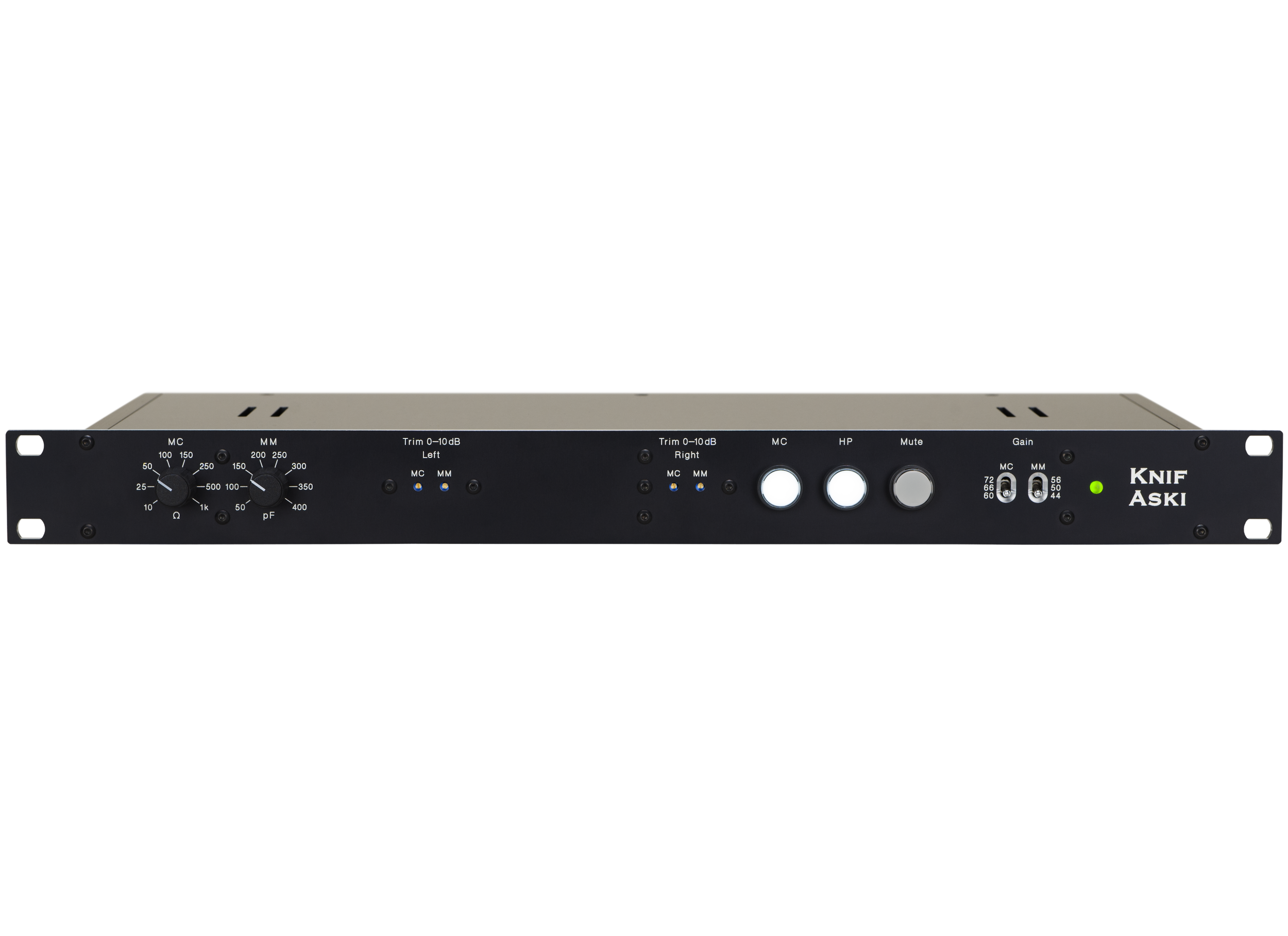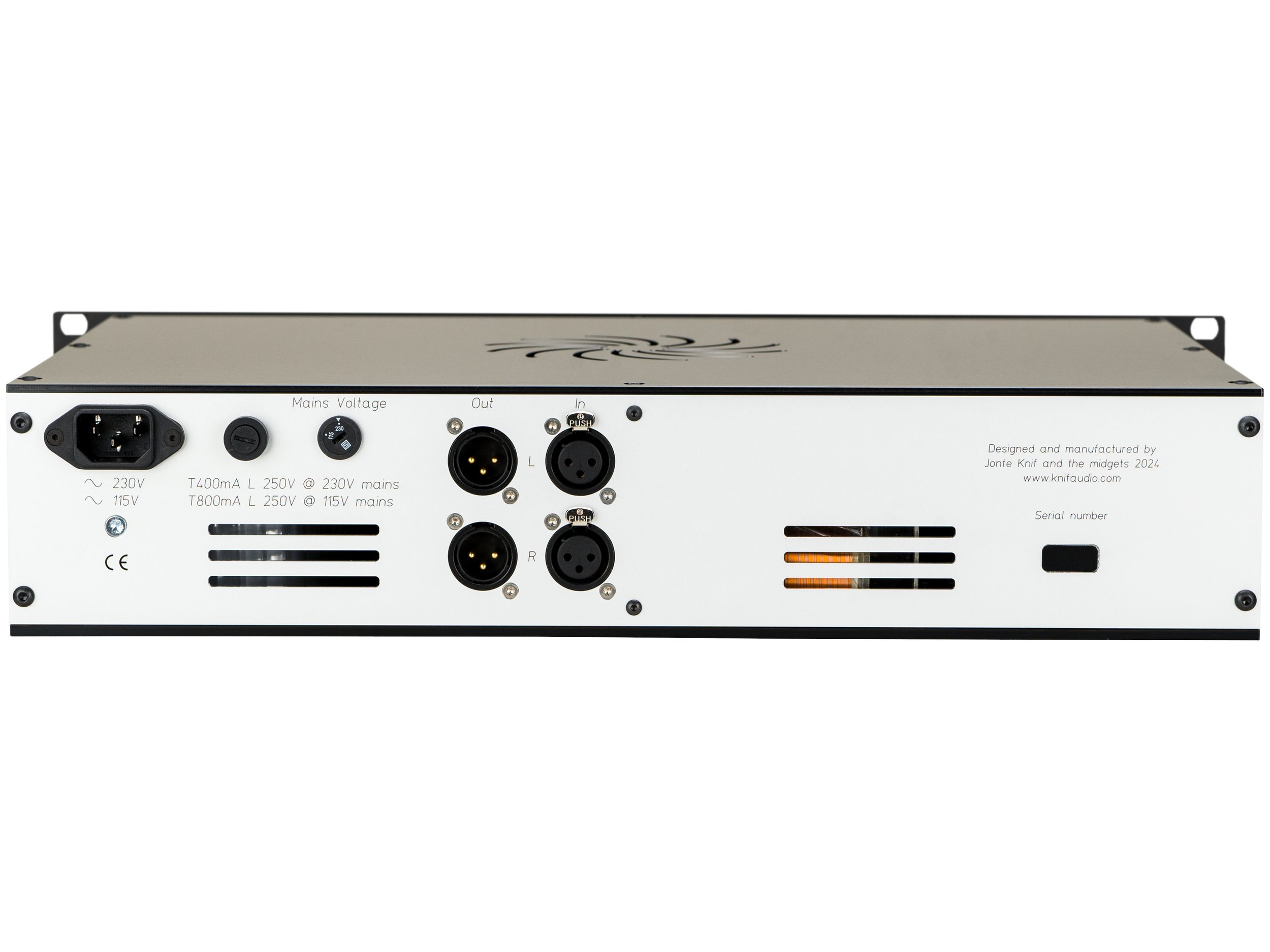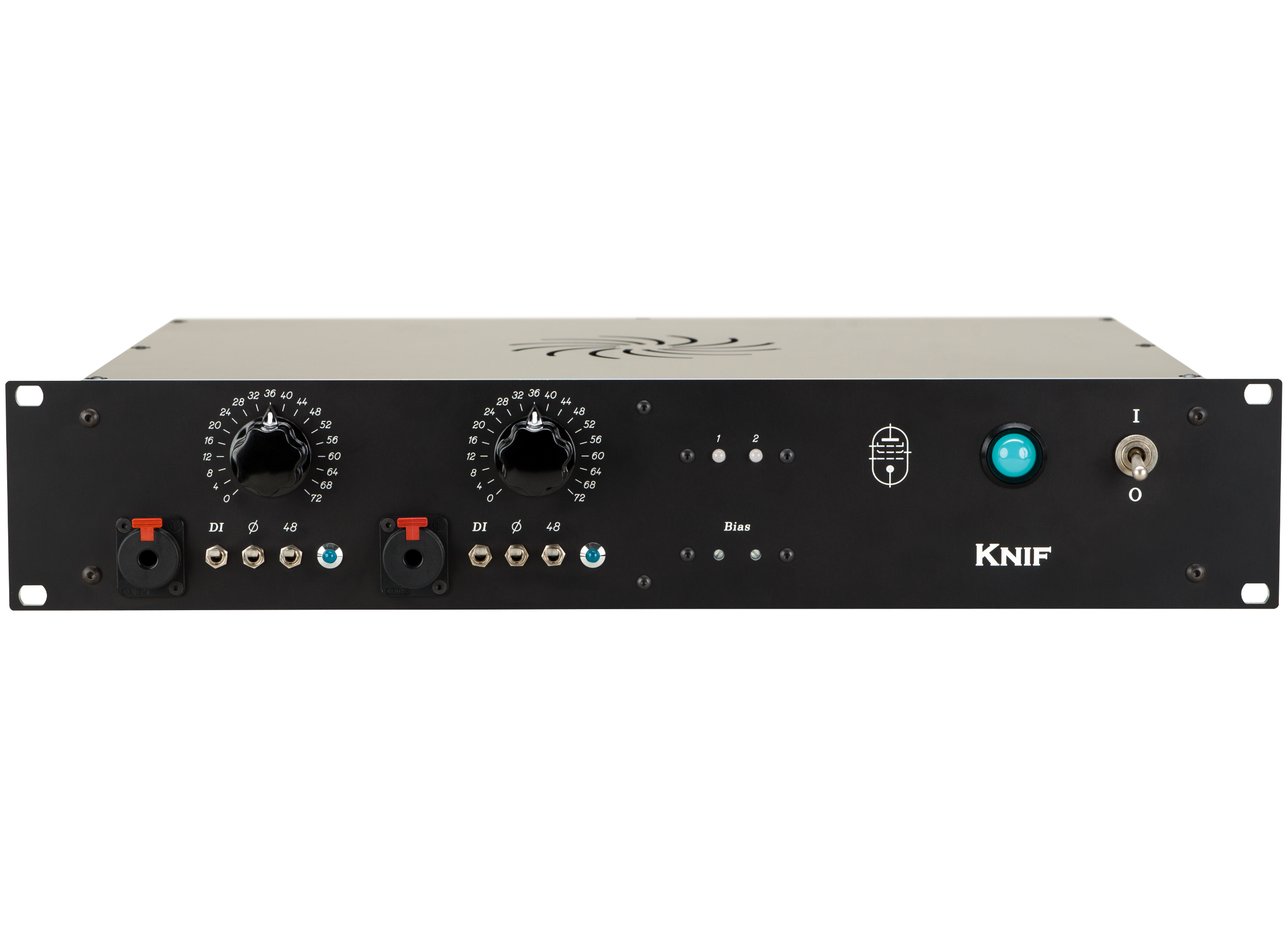KNIF SOLMU Stereo Mastering Compressor
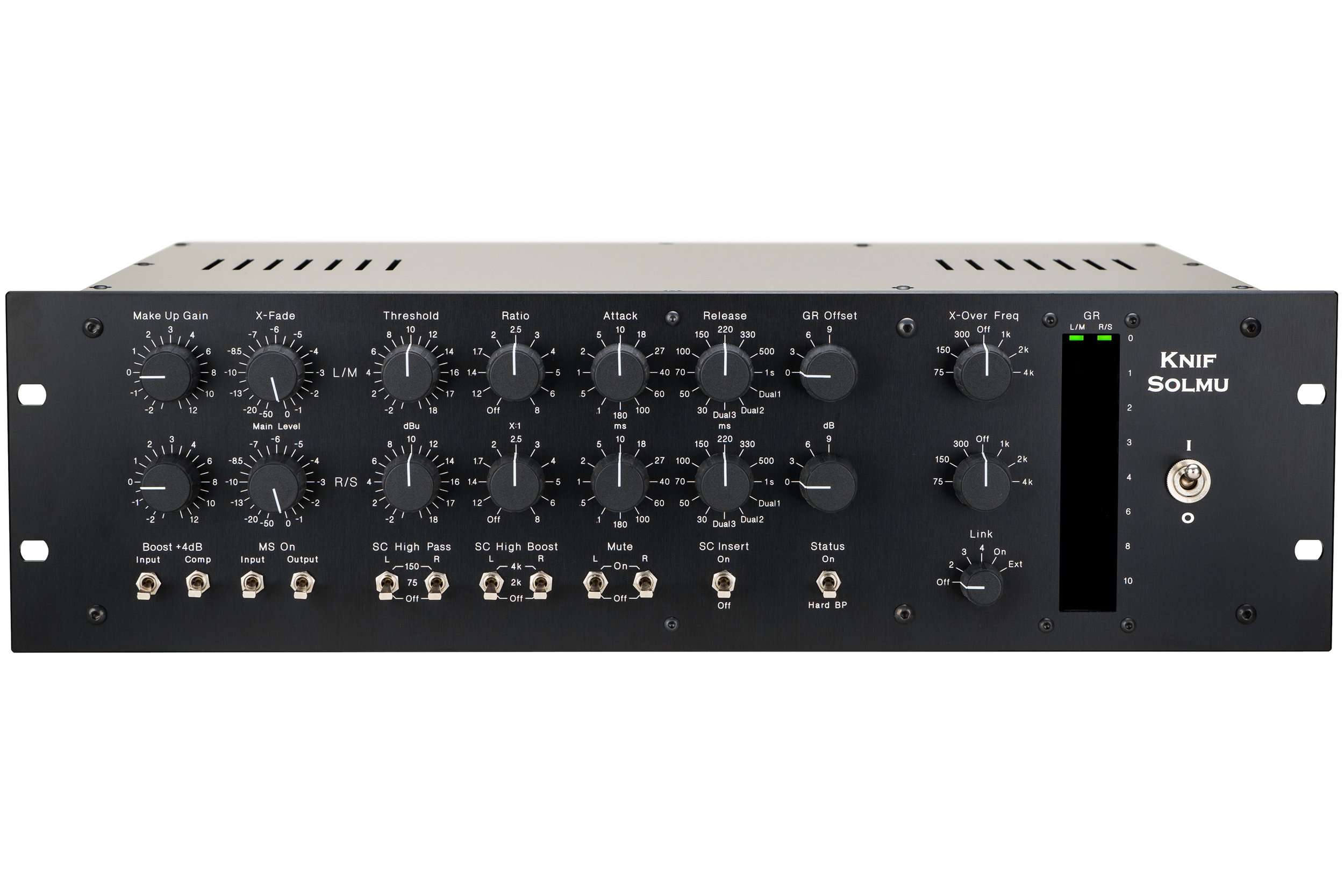
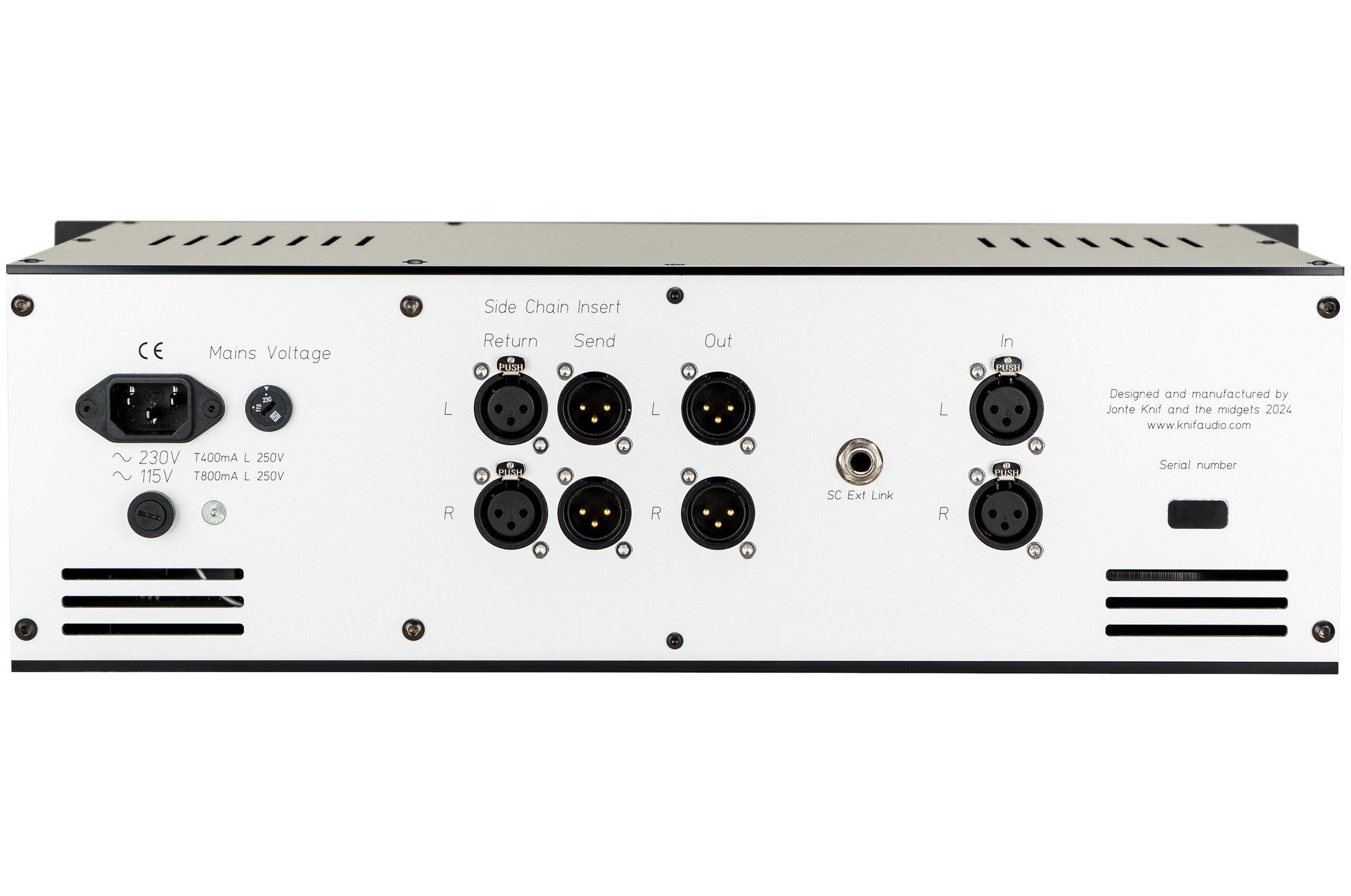
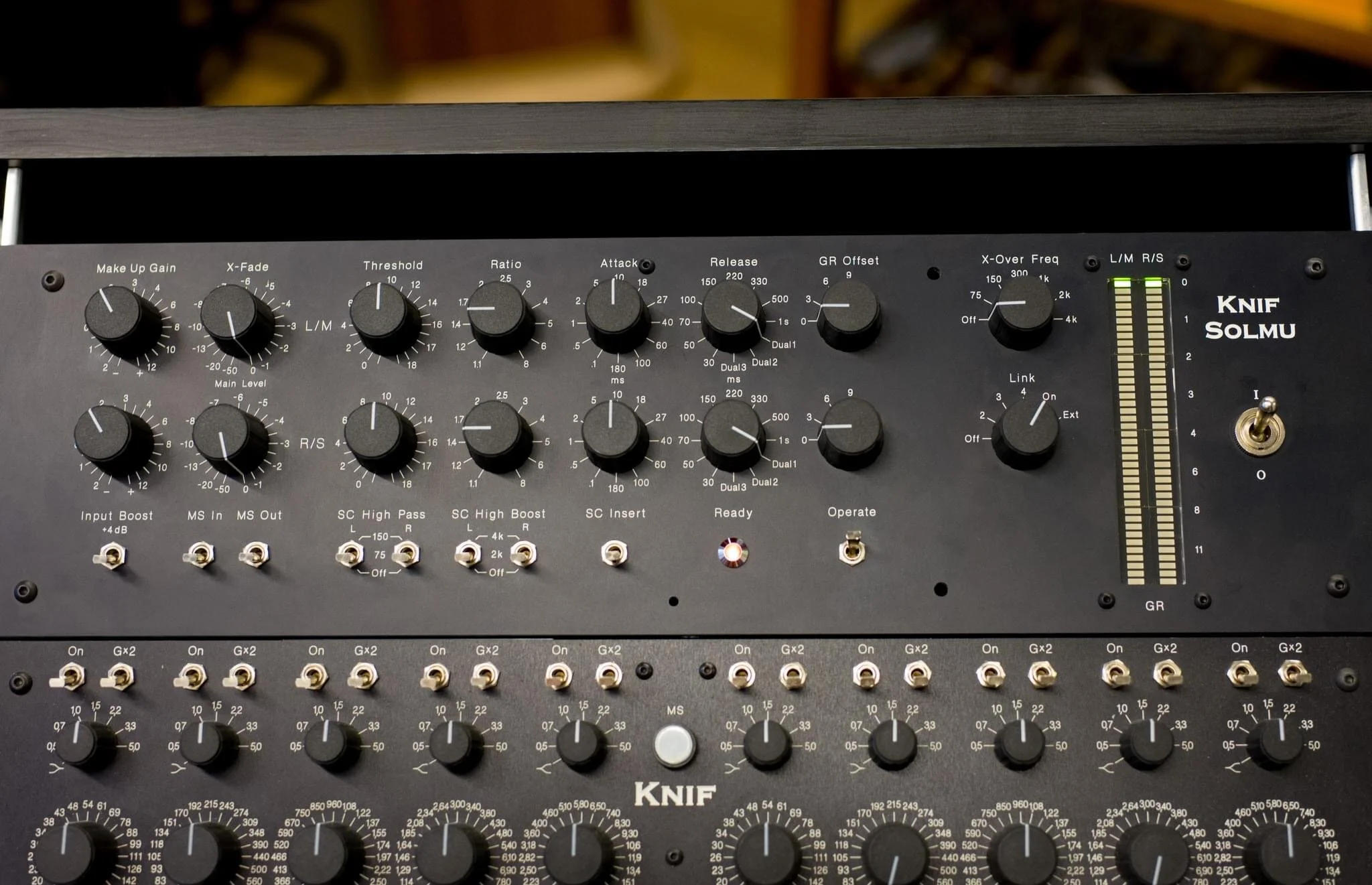

KNIF SOLMU Stereo Mastering Compressor
IN STOCK!
Free Insured Shipping in the USA. Tax and Duty Free (already paid by us). Factory Warranty. Pro Audio Toys is an Authorized KNIF Audio Dealer.
SOLMU is the newest compressor from Jonte KNIF of KNIF Audio. A stereo FET Vari-Mu style mastering compressor with selectable frequencies and optional, adjustable parallel compression called “X-Fade.”
You could compress everything, just the bass or treble, or even with M/S l, just the bass in the center, in parallel, or not, etc.
Most versatile compressor KNIF has ever designed.
From the KNIF Solmu Manual
Solmu is a versatile compressor excelling in mastering and master bus but not limited to that, thanks to broad range of time constants, ratios and the ability to compress a lot without sounding broken. In addition to the basic functions it is capable of parallel compression and bass or treble range compression only. There is also a way to increase dynamic distortion by moving “normal”, no compression state down the compression curve, which causes the circuit to produce more 3rd harmonic distortion. Gain reduction is executed in a simple and elegant mosfet circuit which is transformer coupled through special, big, bifilar wound, permalloy core transformers housed in mu metal shields for wide bandwidth, high headroom and low noise. The transformers are very low in coloration and provide full headroom for even 20Hz signals. The rest of the signal path consists of a mixture of the best jfet input IC OP amps, OPA828 and six pieces of KNIF discrete class A amps for make up gain and MS decoding and output drivers. The result is a distortion performance and colorations wholly dominated by the simple compression circuit and interstage transformers. The mosfet GR circuit is sensitive to temperature variations, and is therefore heated to 70 degrees by a temperature control unit. This takes about five minutes after powering up. All controls use Elma rotary switches for ultimate precision and longevity.
Signal flow Audio input is first debalanced and taken to
1) MS encoding circuit (MS In), which can be bypassed or activated from front panel
2) Divided into Parallel path and Compression path (labeled “main level” on the X-fade level)
3) X-over filters, which can be bypassed or activated from front panel. The three lowest positions are low pass for the Compression path and high pass for the Parallel path. The three highest positions are high pass for the Compression path and low pass for the Parallel path thus providing the possibility to compress bass or treble only.
4) GR circuit in the Compression path 5) Side chain insert point from the Compression path to detection circuits.
6) Make up gain rotary switch and amplifier
7) X-fade rotary switch and mix amplifier
8) MS decoding circuit (MS Out), which can be bypassed or activated from front panel
9) Output amps Front Panel Labeling
Most things on the front panel are self explanatory but some require clarification.
1) +4dB Input boost is simply extra gain at the input for very heavy handed compression tasks. +4dB Compression boost increases level for compression path only, enabling still more colored and heavy compression.
2) X-fade has dB values for the Compression path. The dB values for the Parallel path are approximately the same, but running in the opposite direction. At 12 o'clock we have the 50/50 mix position and this is the starting point when using X-over. When you want to hear what is going on in the Compression path, just turn the X-fade fully clockwise
3) Threshold has dBu values, but in X-over and MS modes these are internally scaled for more usable range. +6dB for MS side channel, +3dB or +6dB for some X-over modes.
4) Ratio values are x:1 Note that this is a soft knee compressor, and therefore the ratios are approximate. Attack and Release also affect the ratios somewhat.
5) Dual Release times are approximately: Dual 1: 70ms+700ms, Dual 2: 100ms+1.5s, Dual 3: 200ms+3s. Long periods of compression will activate the long release part more than short periods. Primary attack values are equal to values written on front panel.
6) GR Offset (in dBs) moves the “normal”, no compression state down the compression curve and compensates this automatically in make up gain amplifier and side chain. The usage is to cause more 3rd harmonic content distortion. Distortion for high level signals is about 0.06% @ 0dB GR, increasing to about 1.2% @ 12dB GR. This may sound like a lot, but it is actually difficult to hear with high dynamic content signals like percussions.. Usability of this feature depends heavily on material and way of compressing. Note that this function increases ratio, so when comparing you have to reduce ratio by about 1 step per 3dB move on the switch. Note: GR Offset also reduces the maximum available compression amount.
7) Link: Intermediate positions are a bit difficult to describe. Position 2 causes only very little linking, position 4 causes almost full linking, especially during release period. The effect depends on time constants, so best advice is to experiment and if it works, it works. Beware of stereo image movements! Probably more usable in MS than stereo, but can also be used in stereo. The unit can be linked to other Solmu units through back panel 1/4” phone jack and by turning the link to “Ext” position.
8) Side chain high pass is 6dB/oct. Side chain high boost is a 10dB shelf.
Specifications
Attack time: 0.1ms to 180ms
Release time: 30ms to 3s (dual)
Ratio: ca. 1.2:1 to 8:1, soft knee Maximum level In/Out +26dBu
Maximum compression: 13dB
Frequency response, -1dB points, Ref 1kHz 7Hz and 80kHz
3rd harmonic distortion from GR path, 18dBu, 1kHz @ 0dB GR 0.05%
(there is some 2nd harmonic present, but only in inaudible amounts)
@ 3dB: GR 0.10%
@ 6dB: GR 0.25%
@ 9dB: GR 0.6%
Noise level, compression on: A-weighted -87dBu
Dynamic range, compression on: A-weighted 113dBu
Harmonic distortion on everything else than GR path is below measurement limit of our AP analyzer

